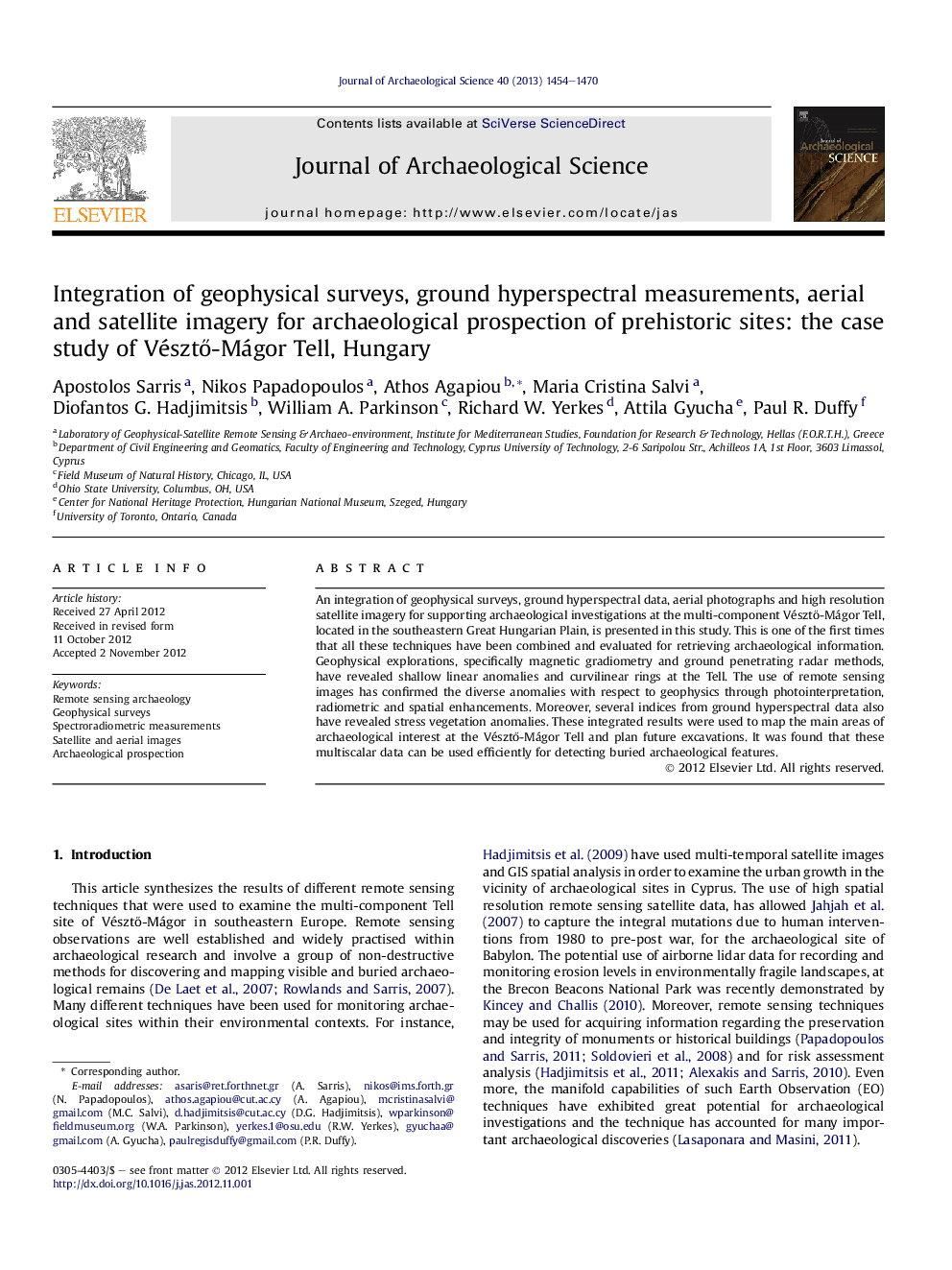| Article ID | Journal | Published Year | Pages | File Type |
|---|---|---|---|---|
| 1035440 | Journal of Archaeological Science | 2013 | 17 Pages |
An integration of geophysical surveys, ground hyperspectral data, aerial photographs and high resolution satellite imagery for supporting archaeological investigations at the multi-component Vésztő-Mágor Tell, located in the southeastern Great Hungarian Plain, is presented in this study. This is one of the first times that all these techniques have been combined and evaluated for retrieving archaeological information. Geophysical explorations, specifically magnetic gradiometry and ground penetrating radar methods, have revealed shallow linear anomalies and curvilinear rings at the Tell. The use of remote sensing images has confirmed the diverse anomalies with respect to geophysics through photointerpretation, radiometric and spatial enhancements. Moreover, several indices from ground hyperspectral data also have revealed stress vegetation anomalies. These integrated results were used to map the main areas of archaeological interest at the Vésztő-Mágor Tell and plan future excavations. It was found that these multiscalar data can be used efficiently for detecting buried archaeological features.
► The paper presents the results from state of the art remote sensing techniques for supporting archaeological investigations. ► One of the first times that geophysical surveys, ground hyperspectral and satellite data were applied simultaneously. ► The potentials of all these methodologies are been highlighted.
